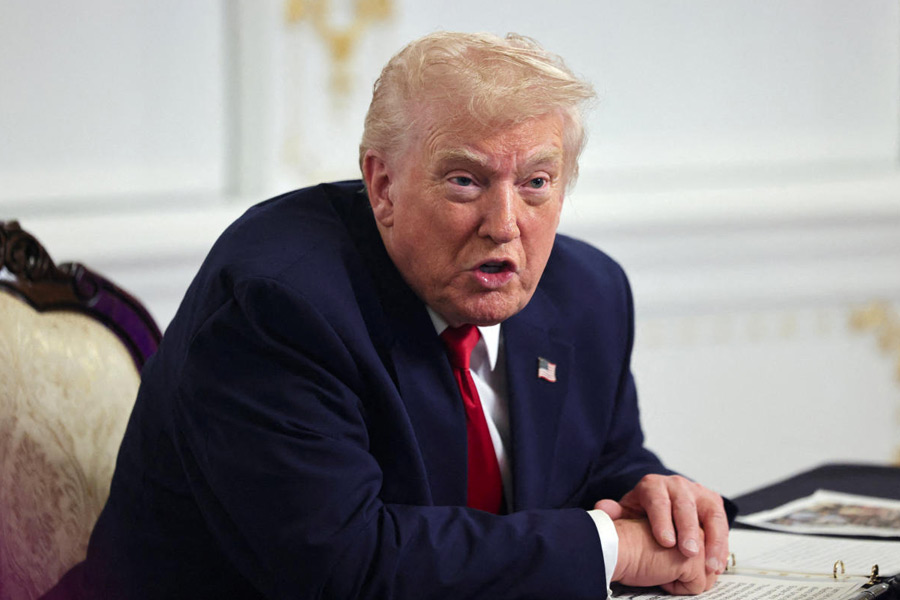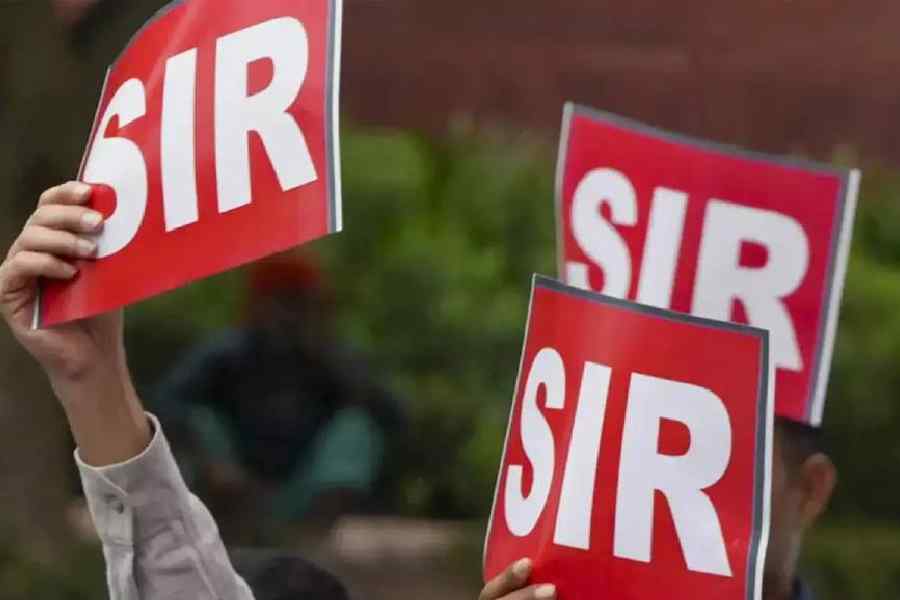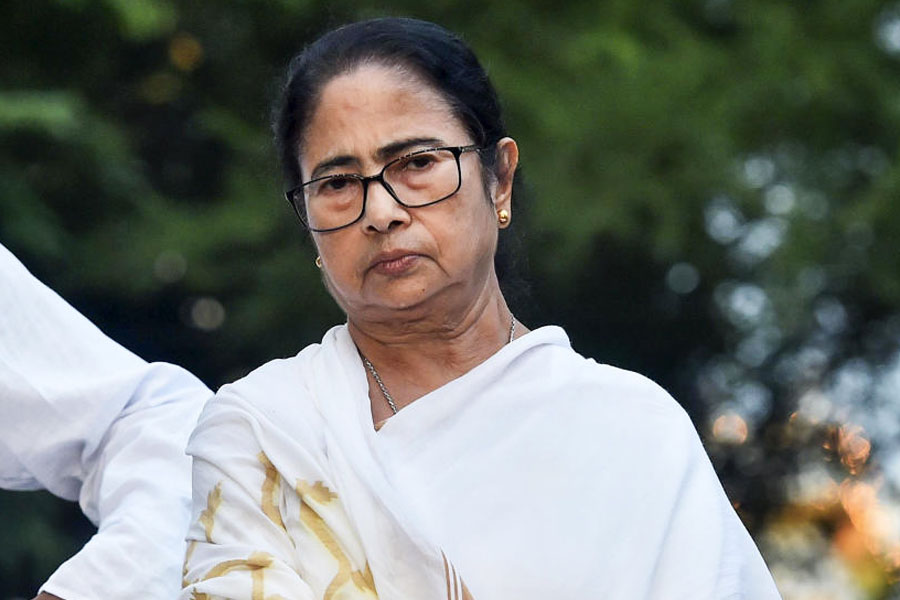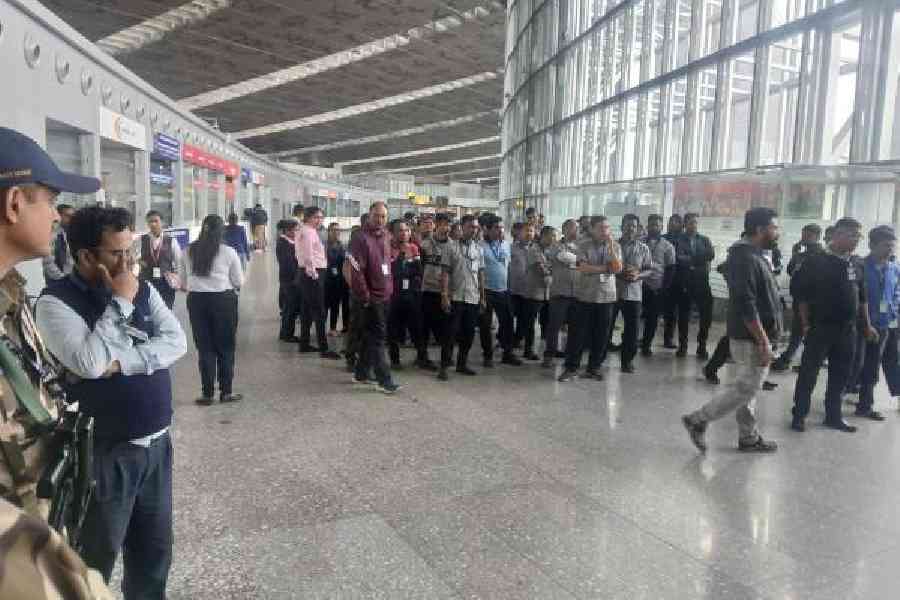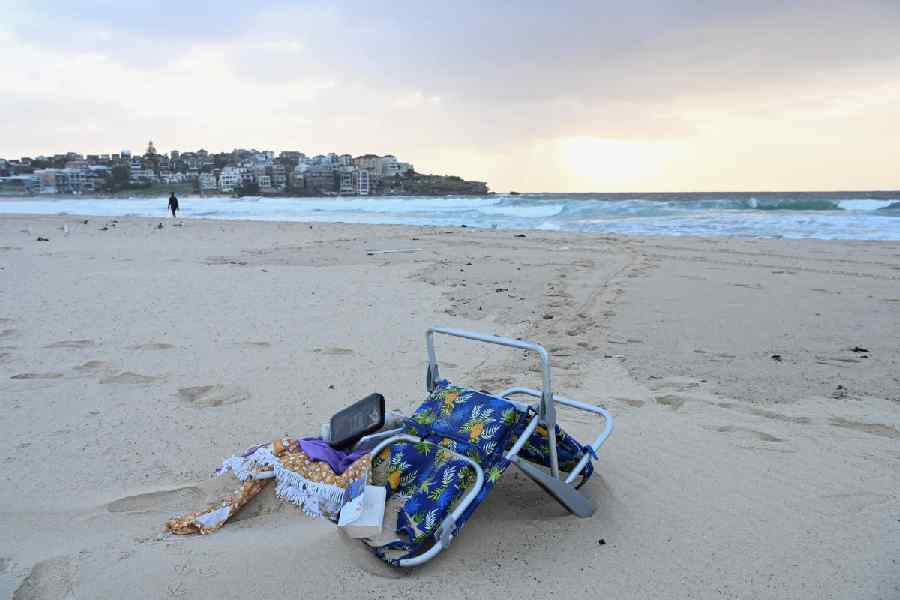 |
| An Ethiopian worker, waiting with his countrymen to be repatriated, argues with a Saudi security guard in southern Riyadh last week. (Reuters) |
New Delhi, Nov. 17: Salim Mohammed’s first phone call every day is to his wife in Bengal’s Barasat, but on a Monday morning earlier this month, the printing press technician in Riyadh broke with routine to call schoolteacher Mohammed Anis instead.
At midnight just hours earlier, Saudi Arabia had ended a six-month grace period it gave millions of workers from nations like India, often with dubious employment permits, to regularise their status or face deportation.
But Salim was safe, and he wanted to return the call that shook him into legalising his stay in Saudi Arabia in time. The conversation was brief. “Thank you,” Salim said, they both recalled.
The call that saved Salim was a part of an eight-month long, round-the-clock mission taken up by a network of over 600 schoolteachers, parents, workers and housewives with the Indian embassy in Riyadh to rescue 1.4 million Indians living in Saudi Arabia illegally.
It took over one million telephone calls in all, daily Facebook updates, night shifts bent over help desks in tents outside the Indian embassy and hectic lobbying with the government of Saudi Arabia.
But on November 4, when the grace period ended, India’s sleep-deprived diplomats and volunteers could claim success.
In March, when the government of Saudi Arabia announced that it was implementing the Nitaqat — a law aimed at giving preferential employment to locals, and involving a drive to identify illegal migrant workers — India was preparing for a flood of returning citizens.
But Indian expatriates in Saudi Arabia have actually increased over the past eight months from 2.4 million to 2.8 million, also belying fears that India was on the verge of losing one of its largest source of remittances.
“It was a massive and difficult operation,” Hamid Ali Rao, India’s ambassador to Saudi Arabia told The Telegraph from Riyadh. “We were thinking on the run for eight months, but today there’s a deep sense of satisfaction, personally for me, and for the whole group that made this happen.”
For Rao, the first challenge was reaching a large, diverse community spread out across a country two-thirds the size of India. In April, the embassy made a public appeal for volunteers to register on the mission’s website. Soon, 600 had signed up to volunteer full-time without remuneration.
“We knew we couldn’t do this scale of an operation on our own. We needed help,” Rao said.
Next, the embassy roped in the 10 Indian community schools dotted across Saudi Arabia, with a total of 60,000 students. The schools became hubs where those needing advice could seek out help. Teachers and parents joined the full-time volunteers, forging an army of men and women banded together by common cause — saving their community.
Simultaneously, Rao and his deputy chief of mission Sibi George began negotiations with the Saudi government — seeking a grace period, and asking for help to regularise the stay of those who wanted to remain in the country.
The Nitaqat — under which companies must employ one local for every 10 migrant workers — is important for the Saudi Arabian government to quell domestic dissent over unemployment after the Arab Spring that dethroned several other regimes in the region.
But Indian and other South Asian workers are also the fuel that runs the Saudi economy, and New Delhi is one of Riyadh’s largest trading partners. The Saudi government agreed to a grace period — first till July, and then extended till November 3.
The army of volunteers got to work.
One group burned telephone lines during the day, the other manned helpdesks at night. At one stage, Anis, the schoolteacher, had not seen his wife Rubina at home for 10 days — he volunteered at night, Rubina in the day. But the couple from Mallapuram, Kerala, felt it was “worth it,” Anis said.
The calls helped the embassy identify four sets of Indians who needed help.
Thousands wanted to return home but couldn’t because of a Saudi exit control policy. About 400,000 others who had come to Saudi Arabia on a visa for drivers were now working as technicians and engineers, and needed a change in their visa. Another set of about 400,000 had not renewed work visas. Finally, several thousand were working in the profession stated on their visa, but no longer with the employer who had initially vouched for them.
Rao and his team negotiated solutions for all four sets of Indians needing help. About 100,000 returned home, while the embassy and the volunteers began work on regularising the status of 1.4 million Indians who wanted to stay in Saudi Arabia.
“The big challenge before all of us now was that there was very little time,” Shaukat Pervez, principal of the Indian International School in Riyadh said over phone. The school was a key makeshift help hub, manned by teachers and parents.
Tents were set up on the embassy lawns for additional help desks as the number of workers keen to legalise their status mounted. One day, George recalled, as many as 15,000 Indians visited the embassy helpdesks.
Compounding the challenge was the linguistic diversity within the Indian community. But volunteers from different communities agreed to translate messages, and assisted embassy staff as interpreters when workers — many illiterate — came to helpdesks.
“It was brilliant to see a Malayali at a help desk speaking in broken English to assist a worker from West Bengal,” George, the deputy chief of mission at India’s embassy said. “Once the entire Indian community came together, we knew we could do this.”
As November 3 approached, India, a nation otherwise used to delays, didn’t ask for an extension of the grace period. It didn’t need to, Syed Akbaruddin, joint secretary and spokesperson for the ministry of external affairs said last week. “This,” he said, “has been an untold success story.”


